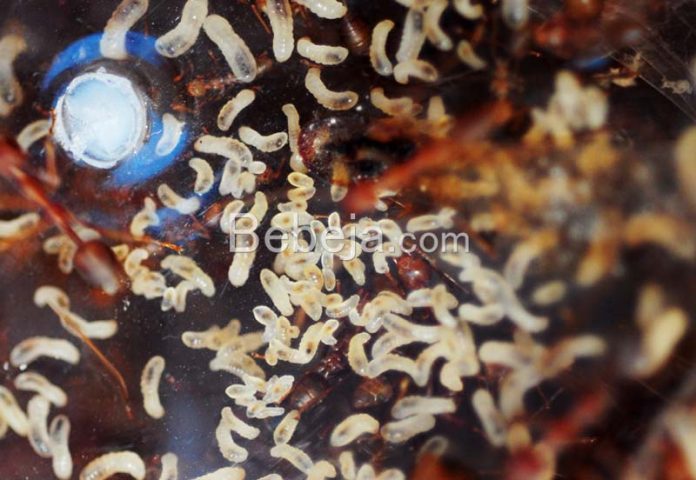Rangrang ants are commonly found on various fruit trees in the yard, such as water guava, avocado, jackfruit, mango, and rambutan. These trees possess features that are preferential to rangrang ants, such as broad leaves, lack of sap, and a dense crown.
Rangrang ants construct nests using leaves. To increase the population of rangrang ants, indicated by an increase in the number of nests, a food source and a suitable environment are required.
Rangrang ants independently forage for food in trees, however, it is recommended to provide additional food such as rucah fish or hongkong caterpillars. The food must be placed in a container, which is then tied to a tree trunk. Sugar water is ineffective as food, as the rangrang ants naturally search for sugar sources in trees.
To ensure that the rangrang ants do not move away, it is essential to create a suitable environment. Rangrang ants prefer warm temperatures and high humidity with good air circulation. The ideal temperature range for them is 28-30°C with 60-65% humidity. Technical term abbreviations must always be explained when first used. Ants will stay longer if they feel comfortable. To provide water, trees hosting rangrang ants should be sprayed with a fine layer of water on the leaves every 2-3 days.
There are two nesting sites for rangrang ants in trees. During the dry season, ants nest deeper in the crown to reduce sun exposure intensity. In contrast, during the rainy season, rangrang ants construct their nests at the crown’s edge to avoid excessive moisture.
